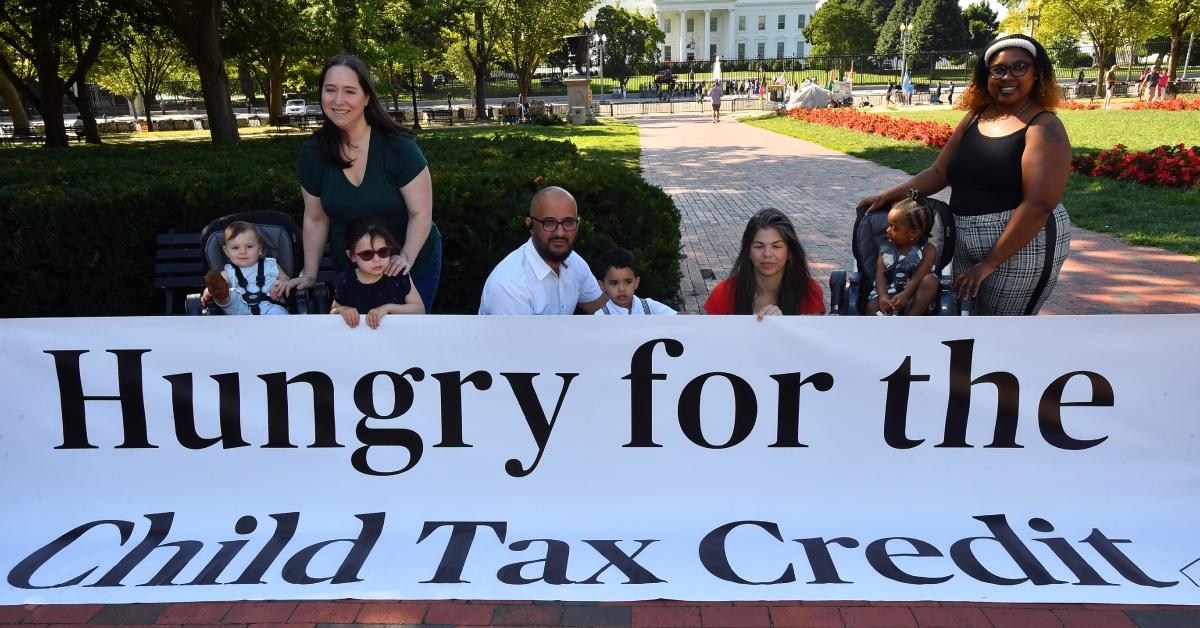Here’s When the 2023 Tax Season Starts — And Why Your Refund Might Be Smaller
The first day you can file your taxes is Jan. 3, 2023. But, this isn't when the IRS will begin accepting returns. So, when should you file taxes?
Jan. 3 2023, Published 2:35 p.m. ET

It’s 2023 which means it’s time to box up (or discard) the Christmas tree, put away the New Year’s Eve party decor, and start gathering your tax documents as the tax filing season is upon us. But, when exactly does tax season start in 2023? Last year, the IRS began accepting tax returns (for 2021) on Jan. 24.
Although the agency hasn’t yet announced when it will begin processing tax returns in 2023, we suspect it will be toward the end of January. Despite this, you can still get a head start on filing your taxes, though you may want to wait before you actually submit your return. Here’s a look at the first day you can file your taxes in 2023 and why the IRS warns of smaller refunds this year.
When can we start filing taxes in 2023?

The first day you can file your taxes is Jan. 3, 2023. However, this isn't the first day the IRS will begin accepting tax returns. Although you may be eager to get your taxes done early, you’ll need to wait until the IRS starts accepting returns before it can actually be processed.
It's also recommended that you wait to file your taxes until you’ve received all your tax documents including W-2s, 1099s, and any other forms that document any income you earned in 2022. Employers have until Jan. 31, 2023, to send out W-2s, which means you may receive it a few days after if it's sent out at the last minute.
If you plan on using a software preparation company to file your taxes, you can start inputting basic information on your forms so that you’ll have less to fill in once you receive all your tax documents.
Will tax refunds be bigger in 2023?
In November 2022, the IRS warned that tax refunds issued in 2023 may be smaller. This is because taxpayers won't be receiving any Economic Impact Payments as they did in the past.
Taxpayers will also have to submit Form 1099-K for third-party transactions that exceed $600. In the past, 1099-Ks were only issued for transactions if the number of “transactions exceeded 200 for the year and the aggregate amount of these transactions exceeded $20,000.”
The IRS also stated that if a taxpayer doesn’t itemize and take the standard deduction, they won’t be allowed to deduct charitable contributions. This year, the IRS raised the standard deduction (for 2022 taxes) for all categories of taxpayers. They are as follows:
- Married couples filing jointly, $25,900
- Single or married filing separately, $12,950
- Head of household, $19,400
If you’re looking to get the biggest tax refund possible, keep this in mind.
Although the IRS mentioned that some taxpayers might receive a smaller refund in 2023, there are a few things you can do that may help get you a larger refund. These include:
- Claim child tax credits and credits for child-related expenses (if applicable).
- Collect your renewable energy credits.
- Itemize if it will yield a higher deduction.
- Claim the American Opportunity Tax Credit (AOTC) if you have a child that is in college. The credit can be applied towards expenses paid for a student during their first four years of college. The maximum amount you can receive annually is $2,500 per student. If the credit brings your tax due to $0, you’re entitled to have 40 percent of any remaining amount (up to $1,000) refunded to you.
What is the new Child Tax Credit for 2023?

Last year, taxpayers received larger than normal Child Tax Credits (CTC). Unfortunately, for the 2023 tax filing season, many CTCs will return to 2019 levels, according to the IRS. That means the CTC credit will drop from the $3,600 issued per dependent back to $2,000 for the 2022 tax year. The Child and Dependent Care Credit will also drop from $8,000 back to the normal amount of $2,100.
When are taxes due in 2023?
The 2023 tax filing season ends on April 18, 2023. This means you’ll need to have submitted your tax return by this date to avoid incurring any penalties. If you know you won’t be able to file your taxes by April 18, you should request an extension from the IRS weeks in advance.
